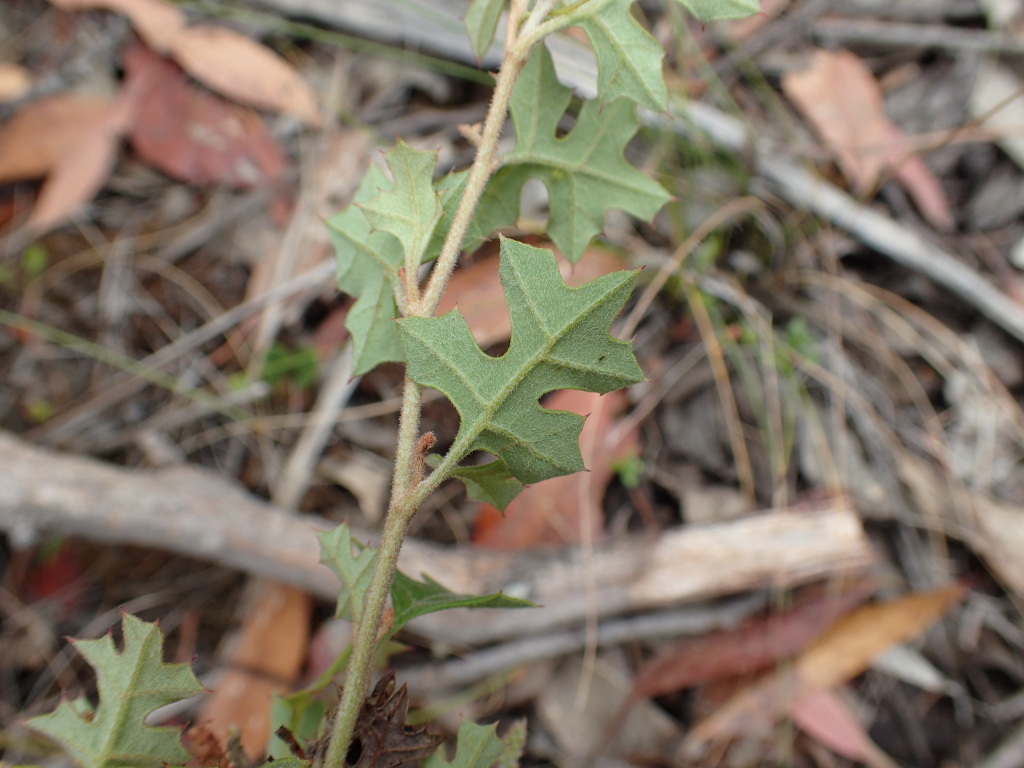Grevillea floripendula
R.V.Sm. Ben Major GrevilleaSpreading decumbent to semi-prostrate shrub, 0.3–1 m high. Branchlet indumentum villous. Leaves pinnatisect or occasionally pinnatifid, 2–6.5 cm long, 1.5–4 cm wide, with 5–9(–11) angular-obovate primary lobes, these again 2–6-dentate to -fid or sometimes simple, basal lobes 1–2 cm long, 0.5–1.5 cm wide; lower surface with an open to sparse indumentum of curly to wavy hairs; margin shortly recurved. Conflorescences terminal, usually pendulous, usually simple, secund, 3–5.5 cm long; peduncles (10–)20–30 mm long, 0.4–0.5 mm wide; rachises tomentose; outer surface of perianth greenish to mauve, subsericeous to loosely tomentose, inner surface mauve-maroon to blackish, glabrous; pistil 13.5–16 mm long, ovary stipitate, subvillous, style yellow to red, glabrous, pollen presenter oblique. Fruits subsericeous, with longitudinal brown stripes. Flowers Oct.–Dec.
VVP, GipP, Gold, CVU, GGr. Restricted to a small area north of Beaufort, from Waterloo to Ben Major Forest. Grows in dry open-forest, on shallow quartzitic soils.
The slender, wiry and glabrous peduncles are a strong diagnostic feature (cf. the related Grevillea steiglitziana, G. dryophylla, and G. montis-cole). In G. montis-cole some conflorescences on an individual plant can be glabrous, but then the peduncles are 0.6–0.8 mm wide, and shorter. Grevillea montis-cole also usually has a greater number of primary leaf lobes (3–)5–12(–22) compared with (3–)5–7(–9) in G. floripendula.
Olde & Marriott (1995a) distinguish 2 forms:
Ben Major form—semi-prostrate habit, leaves shallowly divided, and flowers reddish, occurring in Ben Major state Forest
Musical Gully form—to 1 m high, leaves more deeply divided, and flowers variable in colour.
Makinson, R.O. (1996). Grevillea. In: Walsh, N.G.; Entwisle, T.J., Flora of Victoria Vol. 3, Dicotyledons Winteraceae to Myrtaceae, pp. 845–870. Inkata Press, Melbourne.
 Spinning
Spinning
